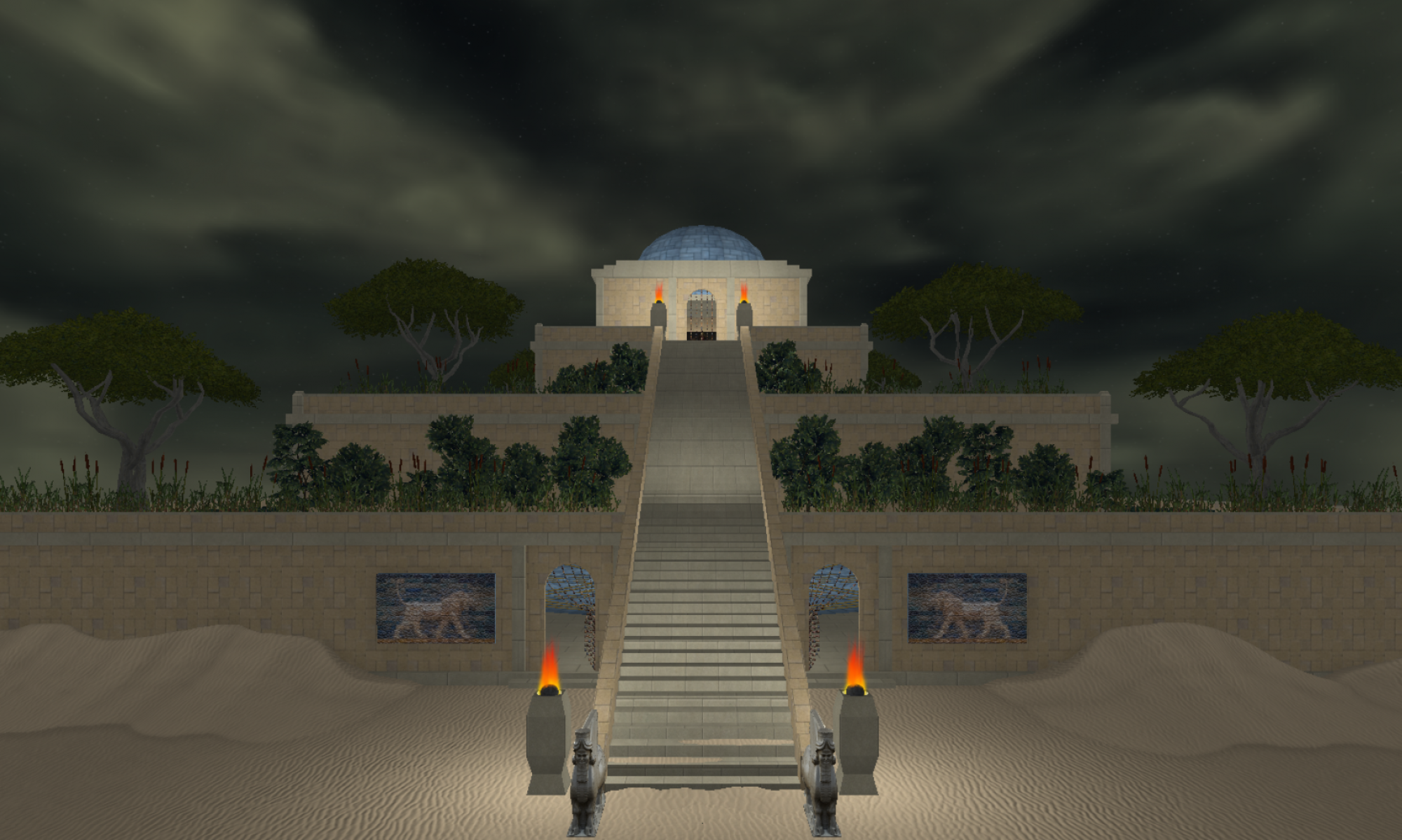The astral temple is a useful skill to develop as a kind of grounding exercise. It can be used as a mobile temple for ritual, a resting place, a meditation hall and a memory palace. What follows is an exercise I developed to develop such a place in the Mesopotamian current. It is entirely of my own design.
Begin by making yourself comfortable. I suggest sitting in a chair but you could do this laying down or standing up if you would prefer, just be sure you do not fall asleep. Take a few moments to breathe steadily, try to time your in-breaths to match your out-breaths in both length and rhythm. Try not to become distracted by momentary thoughts or worries. If you find yourself becoming distracted, as you almost certainly will, do not become frustrated, simply refocus your thoughts back on what you are doing.
Start by imagining the steppe. Brown earth and thin grasses stretch out on rolling hills as far as the eye can see. In the far distance you see a great mountain jutting out at the edge of the horizon and the sun just peaking over the top of the tallest point. The light does not block out the night sky and the stars above you are still visible.
Look down at the ground before you and picture a great ziggurat, the ancient temple, that man-made holy mountain of awe and splendor, slowly rising up from the earth until it is sitting before you. Picture yourself climbing up to the top. When you reach the top you are able to see much further than you could from the ground. The view is breathtaking.
Below you on the floor, the tiles are made of shining lapis lazuli. In the center, where you now stand, the star of Utu, his holy symbol, is painted in gold. It shimmers and glows in the morning light. Above you, the stars sparkle and shine, and the whole sky lights up with the dingir sign which faes and is replaced with the star of Inanna, her holy symbol, lighting up the sky in the same place directly above. They continue to illuminate the sky in this way, first the one, then the other.
You refocus your attention to the top of the Ziggurat. Before you, at the tip of the point of the golden star painted on the floor, a statue of Utu now stands. He is a bearded man wearing the shigurra crown of the Anunaki, holding a saw and standing on a stone dais. He is dressed in a golden yellow robe with the splendor of the sun. Beside the statue are two lammasu.
You turn to your right, and before you appears a statue of Nergal at the point of the golden star painted on the floor. He is a bearded man holding an axe with a double-ended blade shaped like the heads of two lions facing oppositeAbusch directions. His face has the ferocity of a lion and he wears the shugurra crown upon his head. He is dressed in a red robe and he holds a sickle. Beside the statue are two lammasu.
You again turn to your right, now facing opposite the sun. Up in the sky you notice the moon shining down. Before you appears a statue of Nanna, lord of the moon, at the point of the golden star painted on the floor. He is an elderly man with a thin face seated upon a throne. He wears a silvery robe the color of the face of the moon. Beside the statue are two lammasu.
You once more turn to your right, and before you appears a statue of Ninurta, the champion of the gods, sitting on the point of the golden star painted on the floor. He wears an orange and blue kilt and a white, red and green top with blue trim. He wears a helmet and he carries the thunderbolt in each hand. Around his waist is a sword in the scabbard. Beside the statue are two lammasu.
You make an eighth turn to the right and at the edge of the circle isa statue of Utnapishtim who survived the flood. Behind him, a river and floating upon it is the coracle ark. He holds a tablet with the advice of Shuruppak.
You turn again to the right and before you, on the edge of the circle, is a statue of the hero Gilgamesh holding his mighty axe. Beside him is Enkidu, the wild man. Behind them is a mighty stack of cedar wood and the great strong walls of Uruk.4
You turn once again to the right and before you, on the edge of the circle is a statue of Lugalbanda, before him is a mighty altar to Suen and Utu. Behind him lies the mountain cave.
You turn once more to the right and before you, on the edge of the circle is a statue of Ur-Namma. Behind him is the Great Ziggurat of Ur, the mighty holy temple to Suen.
You turn again to face the sunrise. Around you are four pillars, adorned with purple cloth and on each is an idol. One to Inanna, one to Ninhursag, one to Ninlil and one to Ningal.
The holy temple is finished.
